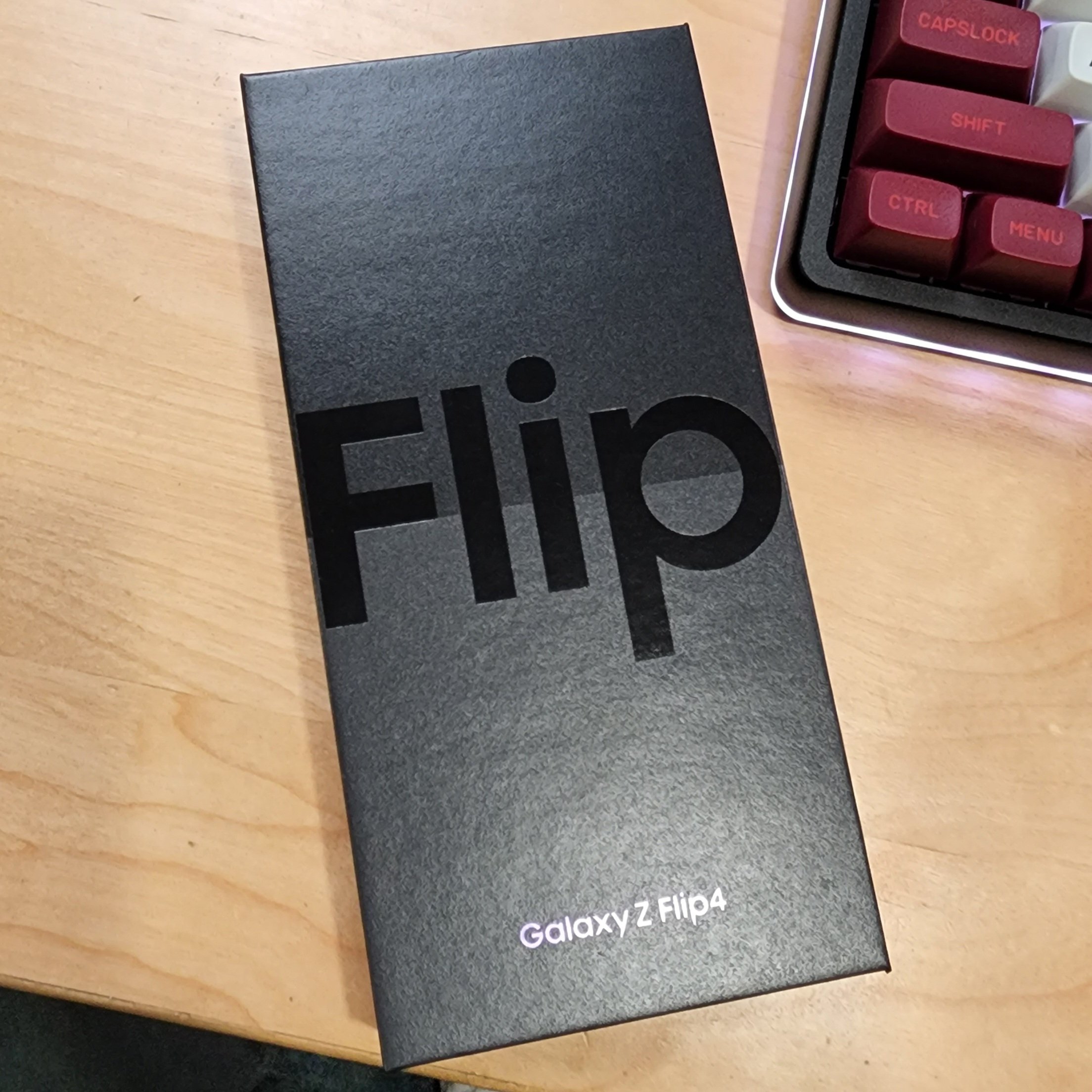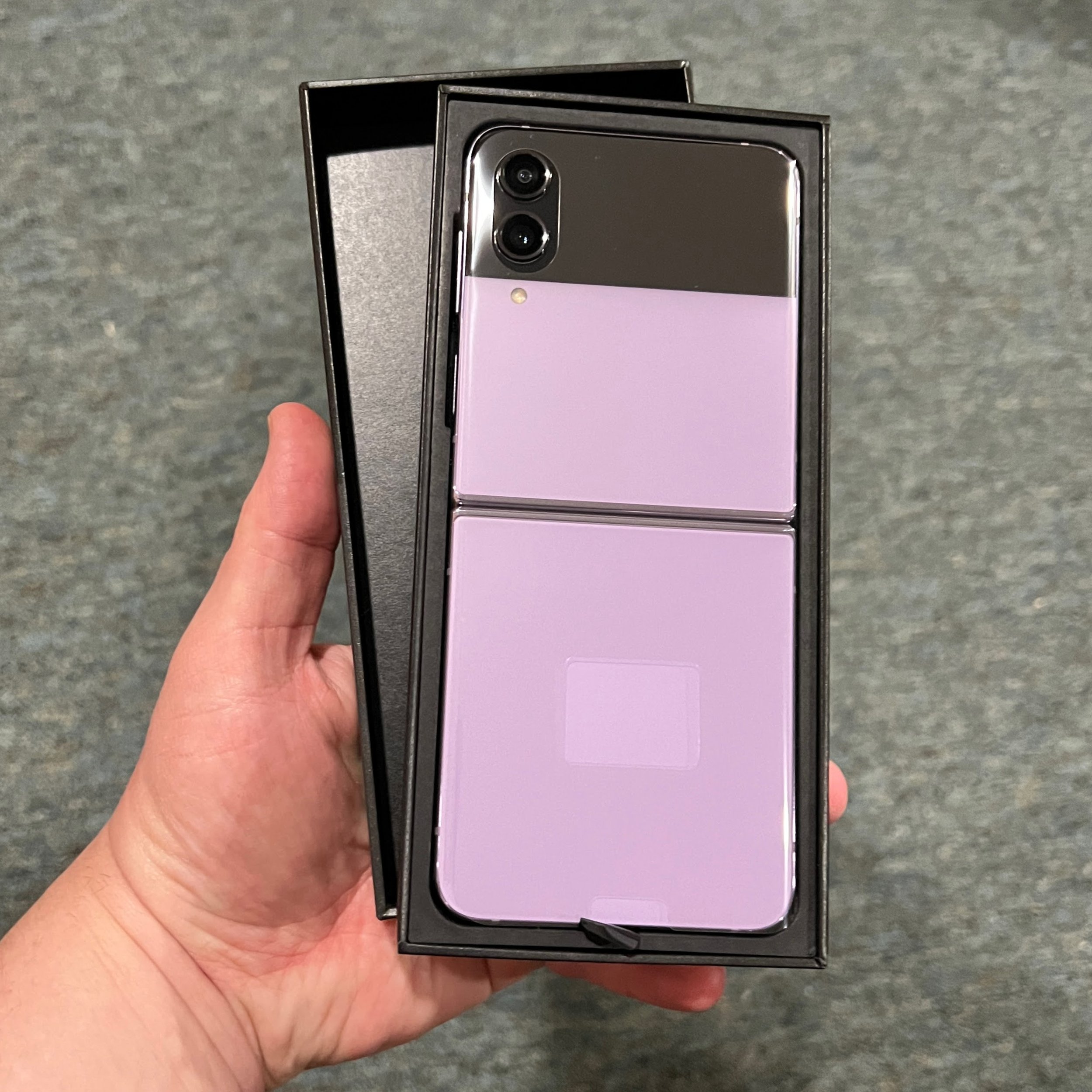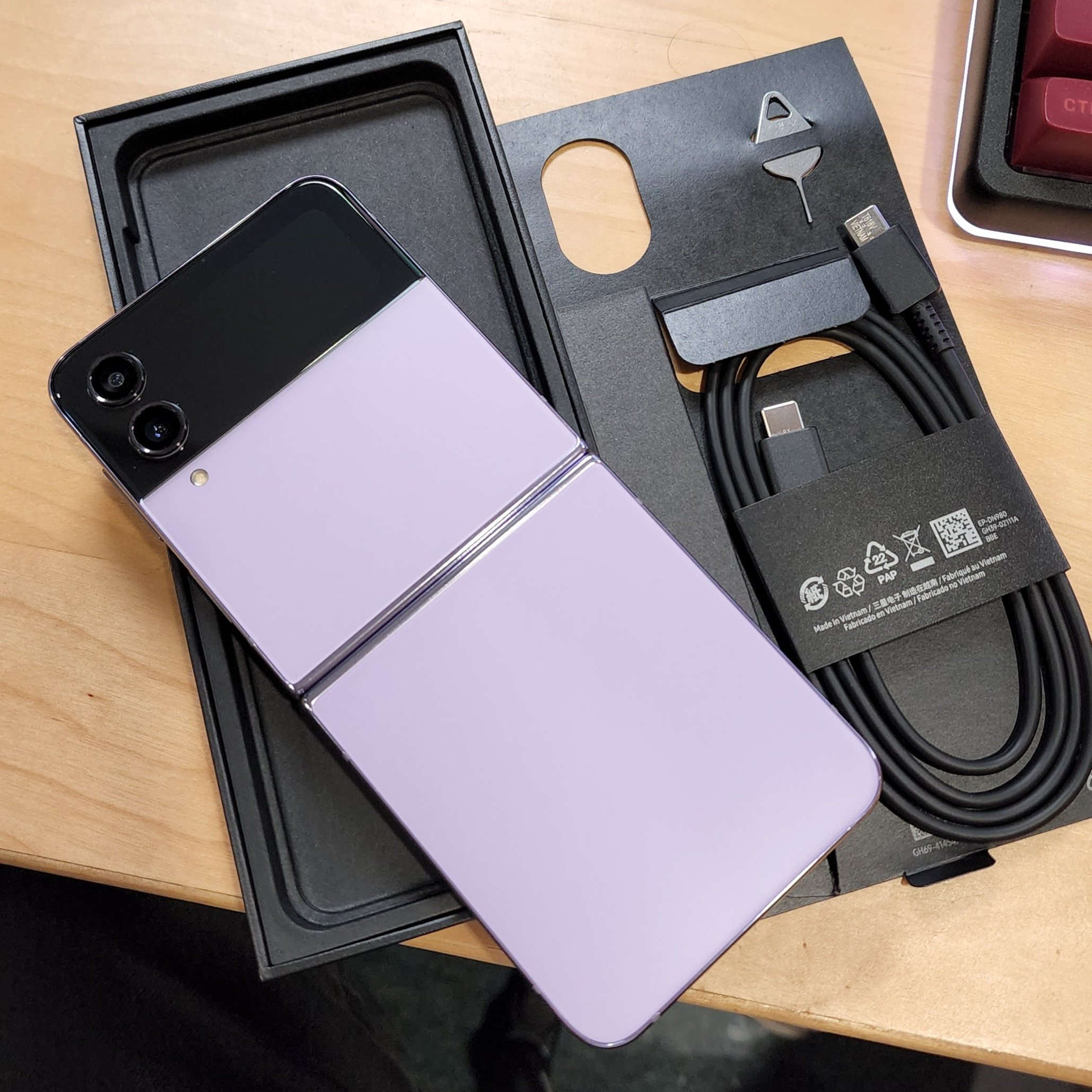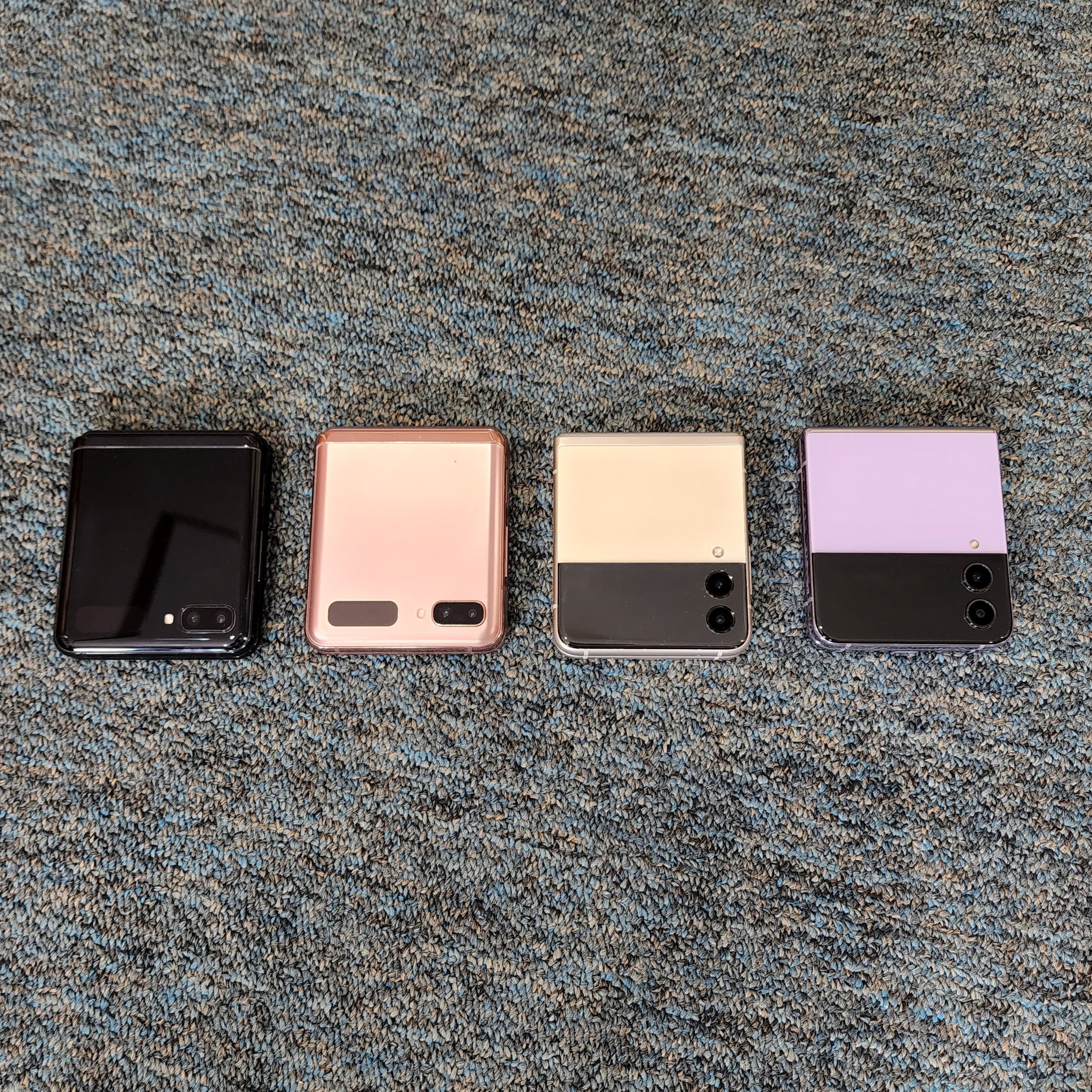Samsung Steadily Refines Its Industry-Leading Foldables
Context and Analysis
Samsung invested early in foldables and with each new generation it refined its software, hardware, and durability. Ahead of today’s launch, Samsung provided rough sales numbers for foldables overall (10 million sold last year) and the split between the Galaxy Z Flip3 (70%) and Z Fold3 (30%). That makes foldables a large niche market, and the Galaxy Z Flip in particular a mainstream product at its price point. While there is some competition from OPPO, Xiaomi, Huawei, and Motorola, Samsung sells the vast majority of foldable smartphones globally.
The fourth generation Z Flip4 and Z Fold4 are not radical departures, but Samsung’s incremental improvements have broadened the market for foldables overall and should keep Samsung well ahead of competitors. It’s not enough for rivals to source a flexible display and design a hinge mechanism; software, durability, and ecosystem are key factors in the foldable device experience. Foldables are also a potent competitive weapon for Samsung against Apple, which undoubtedly has foldable designs in its labs, but has otherwise completely ignored the category. Until Apple fields foldables of its own, Samsung’s Z series will continue to over-index on switchers from iPhones.
Incremental Improvements Build a Market for Foldables
With its fourth generation foldables, Samsung improves imaging, functionality, and durability. Both phones get updated to Qualcomm’s latest Snapdragon 8 Plus Gen 1 platform, improved cameras, and reduced bezels and hinges. There are further software improvements to the Flex mode; when the hinge is not fully opened, the interface divides between the bottom and top halves for gaming, video conferencing, photography, and computing. Samsung is hoping that Flex mode will convince consumers wary of gimmicks that having a phone that folds adds utility. The new phones are also significantly more durable than past models, and remain the only IPX 8 waterproof foldables on the market.
Despite the improvements and the impact of inflation, pricing on the new phones remains the same as it was for the last generation. Samsung has been offering pre-launch incentives, and carriers (especially in the U.S.) are sure to make the phones more attainable with trade-in offers, discounts, and payment plans. For example, Verizon is offering trade-in allowances of up to $800 plus $200 gift cards for switchers. AT&T is even more generous, offering $1,000 off with trade-in of any Galaxy phone in any condition on its best plans. T-Mobile splits the difference: $1,000 off with the right trade-in and Magenta MAX plan or just adding a Magenta MAX line, but also $500 off with trade-in on lesser plans or adding one of those lines. All these freebies aren’t truly free; the strings attached keep you tied to the carrier for 24 (T-Mobile) or 36 months (AT&T, Verizon). AT&T and T-Mobile are also offering BOGOs on Galaxy Watch5 purchases; Verizon will finance the watch, but won’t give you a second one.
However, despite offers from Samsung and carriers, while the $1,000 price point for the Galaxy Z Flip4 has been normalized, the Z Fold4’s $1,800 price point still limits the potential customer base for anyone buying the phone without incentives.
Continued Improvements to Environmental Impact
Consumers care about the environmental impact of their purchase choices, and Samsung has been aggressively promoting its green initiatives. Samsung is incorporating repurposed fishing nets, other post-consumer materials, and bio-based resin into 90% of Galaxy devices launched in the past year. Admittedly, these parts often make up individual components, but this isn’t just eco-marketing without eco-substance: Samsung’s volumes are enormous, and with each design generation the company has been increasing usage of environmentally conscious materials. Samsung launched 37 models globally over the past twelve months and 34 of them include at least one component sourced this way. In the case of the new Galaxy Buds2 Pro, more than 90% of the product is made with recycled materials. Samsung has up-cycling programs for its phones (finding new purposes for them), but earbuds are semi-disposable products, so at least Samsung’s newest aren’t using virgin petroleum for nearly all their housing.
Packaging is another area where Samsung has made real progress in using more sustainable materials and less of them. Starting with the launch of the Galaxy S22 series, Samsung has been using 100% recycled paper for flagship product packaging, and the new Galaxy Z phones packaging has shrunk by over 50%, saving the equivalent of over 50,000 trees between the Galaxy S and Z lines in 2022. Smaller and lighter packaging has knock-on effects on the cost (in dollars and emissions) of shipping, too.
Samsung Galaxy Z Flip4
Updates to the Mainstream Fashion Foldable
With the Galaxy Z Flip3, Samsung hit on a combination that sold extremely well: it is essentially a premium Galaxy phone that folds in half, turns into its own tripod, and costs about what super-premium phone buyers were already expecting to pay. Samsung doesn’t want to mess with this formula, and the Galaxy Z Flip4 gets minor adjustments to its design, not wholesale form factor changes. The cameras and silicon have been improved and the hinge is a bit smaller, but most people will be hard pressed to tell the Galaxy Z Flip3 and Flip4 apart at a glance. That is, until they use it all day – the slightly larger 3700mAh should last three hours longer – or abuse it – the panel, case, and ultrathin glass are all 12 – 18% more durable than before.
The easiest way to visually differentiate the Galaxy Z Flip4 from its predecessor is by ordering a Bespoke edition, which fits nicely with many Flip purchase rationale, which tends more towards fashion than productivity. Samsung’s limited trial letting customers customize the color of various portions of the Galaxy Z Flip3 went well, and the company is expanding the program for the Galaxy Z Flip4 to five colors that can be applied to the front panel, back panel, and frame, enabling up to 75 total variations. (The Bespoke Edition is an additional $100 upcharge.) This is a far cry from Motorola’s incredible Moto Maker back in 2013, but that program required a custom factory and was notoriously unprofitable. Hopefully Bespoke will continue performing well for Samsung and the range of colors and accent areas (and materials, please?) can be expanded.
Samsung continues to use software to add utility to the folding mechanism. On the Galaxy Z Flip4, there are Flex mode optimization in some third party video streaming and video calling apps. Samsung also added more responses and widgets to the exterior cover screen, which makes the phone more useful even when it’s closed. There are now quick panel settings (ex: Wi-Fi on/off), SmartThings, and access to Samsung Wallet.
Samsung Galaxy Z Fold4
Software Is At Least As Important as Hardware on Foldables
Samsung continues to optimize the software experience of the Galaxy Z Fold, and this, more than the hardware, sets it apart from rivals. The Galaxy Z Fold4 is undeniably expensive for a phone, but you can do a lot more with it than any other phone on the market. More apps are optimized for Flex mode on the Galaxy Z Fold4 for better content viewing, mouse-like touchpad controls, and mobile gaming. Facebook, Instagram, WhatsApp, Teams, and “several of the most globally popular mobile games,” have been updated specifically for this phone. The optimization doesn’t stop there; S Pen improvements have been made around intelligent handwriting capturing (provided you buy an optional Fold-specific S Pen. Some of the productivity apps that Samsung touts now take full advantage of the Galaxy Z Fold4’s unique capabilities are admittedly somewhat niche (IBM Wealth Manager), but Microsoft Office turns the foldable into a credible laptop alternative, at least in a pinch.
While IT departments are unlikely to start handing out Galaxy Z Fold4’s like candy, Samsung has a strong security message around its Knox platform that should reassure professionals with tech budgets and entrepreneurs buying the device for themselves.
Hardware Changes Make For A Better Balance Between Phone and Tablet
With the Galaxy Z Fold4, Samsung has made subtle changes to the folding form factor itself. By shrinking the height slightly and adding width, the Galaxy Z Fold4 is a bit easier to type on when closed (though entering passwords still requires deliberation). The additional 3mm width, along with narrower bezels, makes the interior screen 3mm wider as well. This isn’t a radical shift – OPPO’s Fold N is much more compact – but millimeters matter. The Galaxy Z Fold4 also lost some weight; by my measurements it is down a just-noticeable 9 grams from the Z Fold3. At 268 grams (measured) the Galaxy Z Fold4 is still heavy, but it is getting closer to the largest bar phones (like the 240g iPhone 13 Pro Max) that aren’t hiding a tablet inside.
With the Galaxy Z Fold3, Samsung chose an under-display selfie camera. It wasn’t perfect, but having the camera mostly invisible meant that it was considerably less distracting when watching content. The arrangement was a success, and we can confirm Samsung’s claims that the under-display camera is improved with the new model. A distorted circular area in the screen can still be seen in photographs of the device, but in real life it really disappears during use. The camera capabilities are still underwhelming, but you can use the main camera for selfies, so this is a good tradeoff.
The battery size remains at 4400mAh, though Qualcomm’s Snapdragon 8 plus Gen 1 SoC should increase the time you can get out of it. Fast charging brings the battery up to 50% with 30 minutes of charging (assuming you buy a fast charger; none is included), and reverse charging is available for your wireless earbuds.
The panel and ultrathin glass durability is up 20% from the previous model. Thanks to a frame made from “armor aluminum” and back panel of Corning’s Gorilla Glass Victus, the Galaxy Z Fold4 better withstands drops, too. Samsung kept the IPX8 waterproof rating from the previous model, and Samsung’s Z phones are still the only foldables to offer this.
Perhaps the biggest knock on the Galaxy Z Fold3 hardware was the cameras, which were merely fine; disappointing given the phone’s price point. Samsung heard the complaints, and while the Galaxy Z Fold4 doesn’t have the Galaxy S22 Ultra’s periscope zoom flexibility, the Fold4 gets the full array and capabilities of a Galaxy S22 camera array with a 50MP main, 50MP ultrawide, and 10MP 3x optical zoom. In Techsponential’s testing, we found this camera system to be excellent on the Galaxy S22, and it is extremely welcome on the Galaxy Z Fold4.
Techsponential has review units of the Galaxy Z Flip4, Galaxy Z Fold4, and Galaxy Watch5; this report will be updated as we get time with the units.
[Updated Aug 10 6 PM ET with unboxing photos, Z Fold4 form factor impressions and measurements]
To discuss the implications of this report on your business, product, or investment strategies, contact Avi at avi@techsponential.com or +1 (201) 677-8284.















